The crested duck breed has a striking headpiece – a crest of feathers that looks like an afro or a messy bun.
Classified under the bird class Aves, crested ducks love to live in flocks of 50-100 ducks. You can find them in ponds, lakes, rivers, and marshes foraging for food.
These ducks also have other unique characteristics that make them good pets in your backyard.
Read on to learn more about the crested duck breed’s history, characteristics, and temperament.
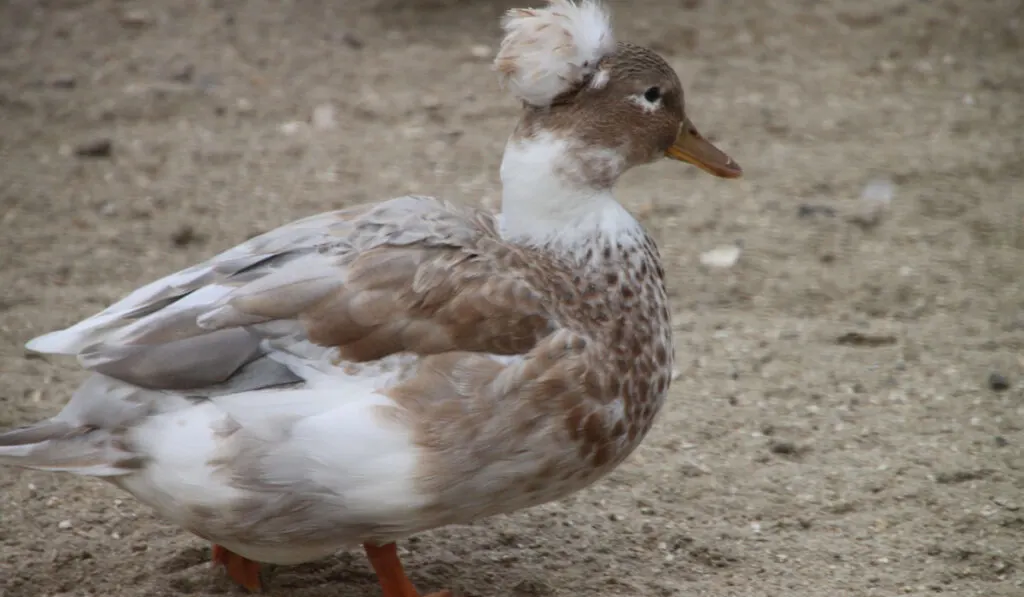
Table of Contents
History of the Crested Duck Breed
Crested ducks, or canard huppe in French, have been featured in Dutch art for over two centuries.
The breed’s exact origin is unknown, but it has been around since the 1600s.
Crested ducks may originate from Holland.
Rumor has it that crested ducks were also a cross between local ducks and Bali ducks from the East Indies. It wasn’t until the late 1800s that the breed was introduced to the United States.
The white crested duck was the first to be admitted, and it took close to a hundred years for the black crested duck to be accepted to the American Standard of Perfection.
Crested ducks also have a bantam version known as the crested miniature.
Roy Sutcliffe and John Hall bred the bantam version in the late 20th century in the U.K. The American Poultry Association listed the breed in 1997.
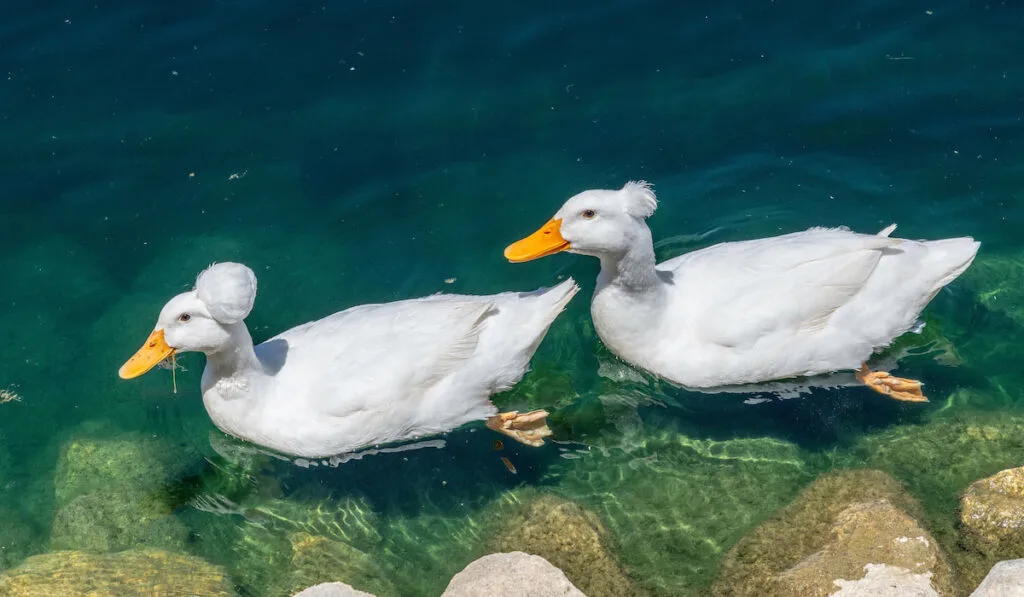
Physical Appearance of the Crested Duck Breed
The distinctive feature of the crested duck is the afro–like crest on its head.
Mallards were the first to have this crest on their heads due to a genetic mutation. However, the crest became a common trait in both sexes through selective breeding.
Adult crested ducks can have blue, gray, white, black, or buff feathers.
Their beaks and feet are long and light orange. They have an upright posture carried by their medium-length neck.
Both male and female ducks are almost identical. The only difference is that the male crested ducks have a more prominent crest than females. They also have curled tails.
Crested ducklings have a fuzzy crest on their head and are pale yellow. Some ducklings may not have crests.
Their crests are due to a genetic mutation.
If a duckling isn’t born with a crest, it won’t develop one over time.
Cresteds are medium-sized ducks with females weighing 6 pounds on average, while drakes weigh about 7 pounds. Miniature bantam ducks weigh 2-2.5 pounds.
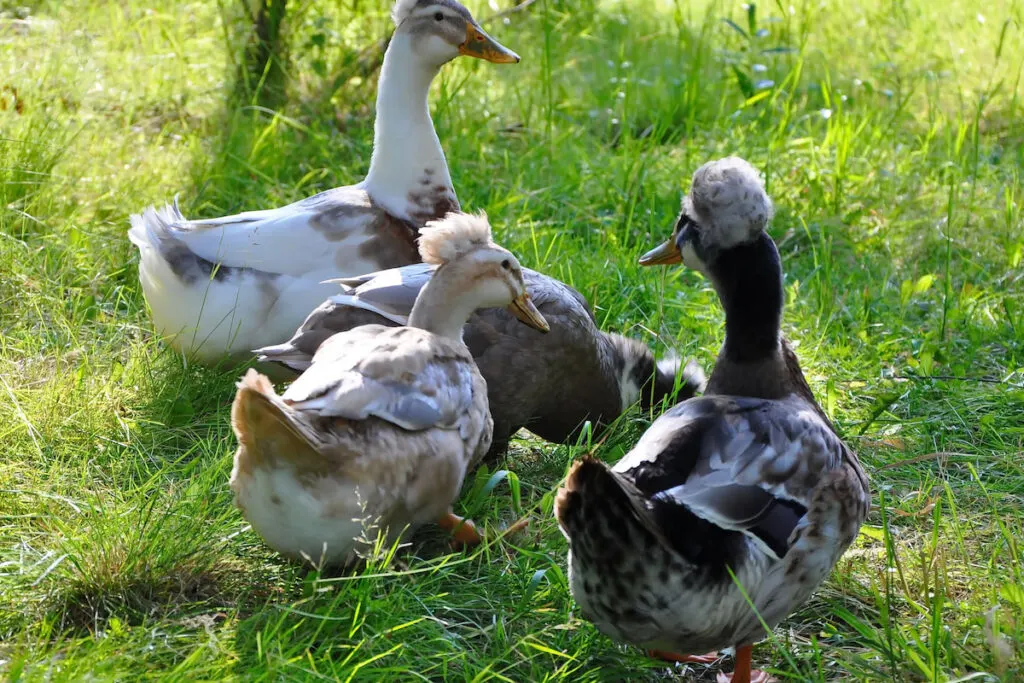
Crested Ducks’ Temperament
Crested ducks have a lovely temperament and are quiet, which makes them easy to care for and perfect to have around kids.
When introducing a crested duck in your backyard, you may notice that the breed can be shy and nervous. However, with interaction, crested ducks become easygoing and friendly.
Crested ducks prefer the freedom to explore rather than being confined in a coop or duck house. You’ll need to provide them with a pool of water as they love to swim.
The breed is also hardy and can survive in most climates.
Unlike some duck breeds famous for their flying abilities, crested ducks don’t have great flying skills. Their wings help them to speed up when escaping from predators.
On average, crested ducks live up to 12 years.
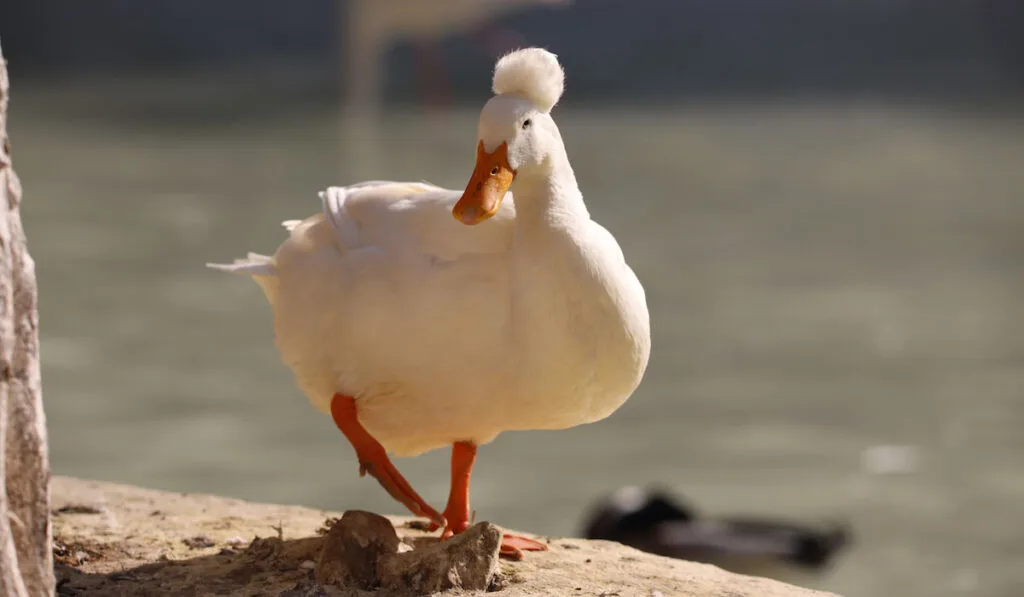
Crested Duck Nutrition Needs
Ducklings need a high-calorie diet full of protein as they grow quickly. You should provide them with a starter feed containing 20% protein in the first three weeks.
Pellets are a fantastic option, as the ducklings can easily chew them.
Remember to include calcium to aid bone growth, as well as zinc to help with catalytic and regulatory functions.
Crested ducks feed on worms, algae, aquatic plants, and mollusks in their natural habitats.
You can give them seeds, weeds, and grass when keeping them in your backyard. You can also give them small fish, snails, and pumpkin seeds as natural protein.
Add kale, lettuce, and broccoli to their diet, as they also need vitamins to improve their immunity.
Laying ducks require higher protein and calcium. Soybeans, fishmeal, and seeds are good protein sources.
Don’t forget to provide your ducks with clean water. It will help their digestion and maintain stable body temperatures.
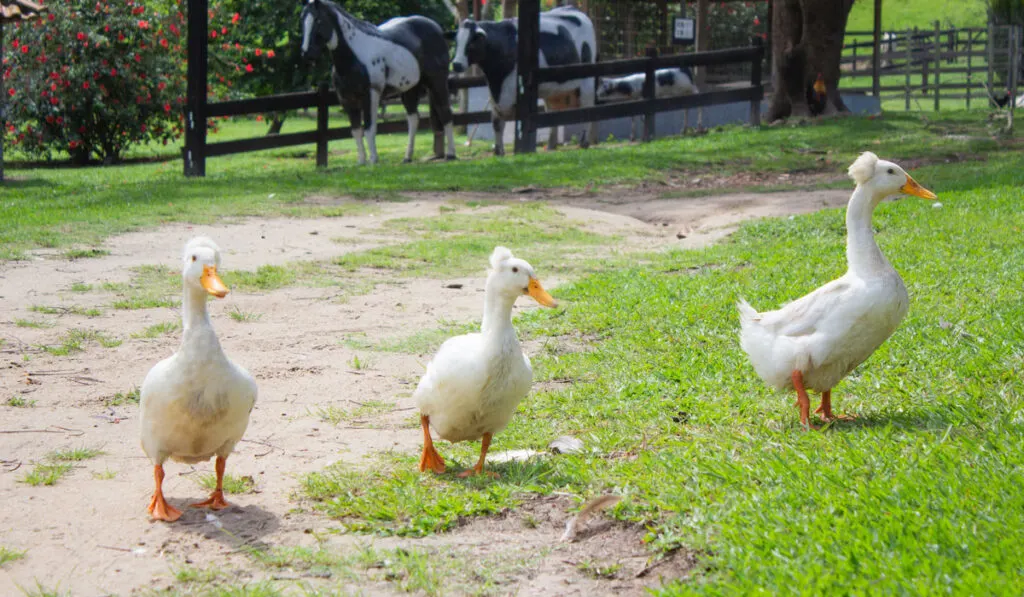
Crested Ducks’ Shelter Needs
Crested ducks only require shelter from the rain and wind.
They should also have a fence to keep them contained. But you don’t need a big fence as the breed doesn’t fly well.
The breed often creates nests on the floor or ground. If you plan to keep them contained, you can use straw in their coop to keep them comfortable.
A medium-sized enclosure will be enough to house them, but make sure that the coop has enough ventilation to keep the air circulating.
The coop shouldn’t have big openings that can allow predators inside. Occasionally, crested ducks may be attacked by natural predators like the black-crowned night heron, and seabirds may target ducklings.
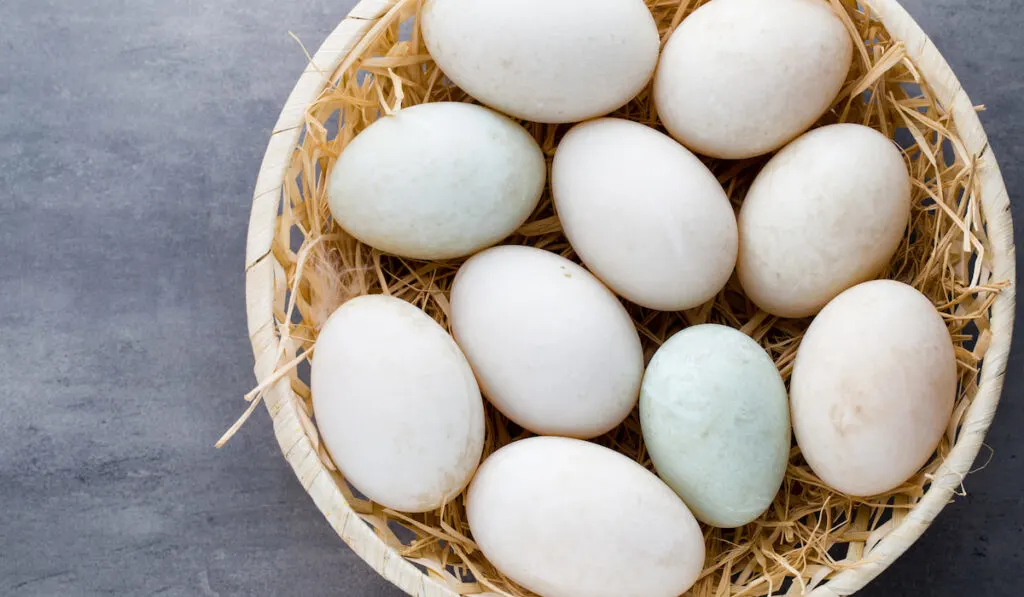
Uses of Crested Ducks
You can keep crested ducks for their meat and eggs.
Unlike most duck breeds raised for meat, crested ducks don’t produce a large quantity of meat. But their breasts provide quality meat that has almost zero fat content.
Crested ducks mature quickly, so you won’t spend much feeding them in preparation for meat production. They also don’t consume a lot of food.
A crested duck lays 9-13 eggs at a time and up to 200 eggs annually.
Crested ducks are better egg layers than meat producers. Their eggs are bigger than other ducks, with larger yolks that have a rich flavor. The eggshells can be blue or white.
If you don’t want meat or eggs, a crested duck doubles beautifully as an ornamental bird. You can simply keep it as a pet.
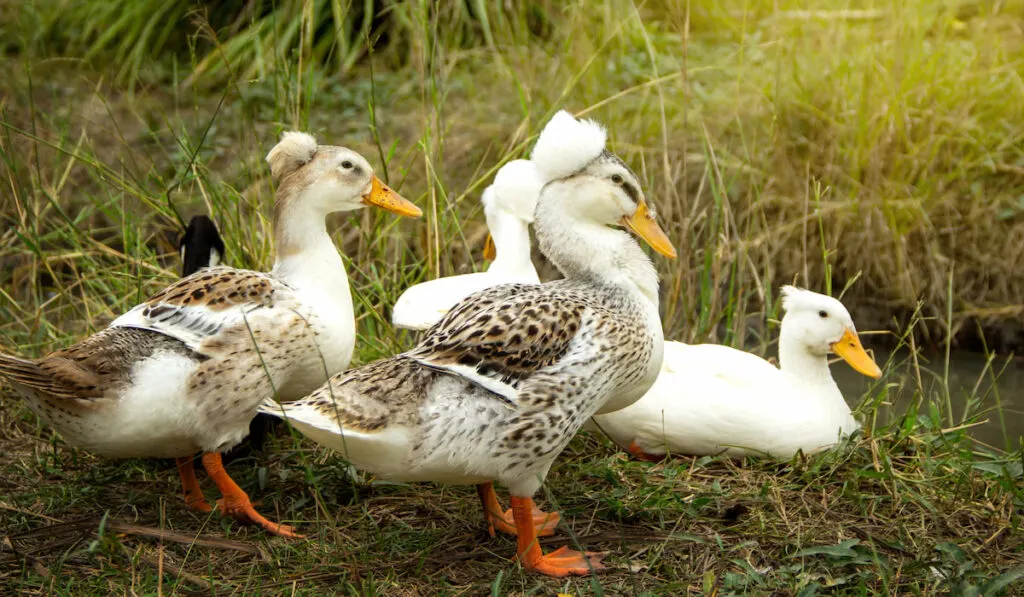
Health Problems of Crested Ducks
Crested ducks are a hardy breed, but they still need vaccination against several diseases that affect ducks.
Crested ducks are susceptible to avian cholera, hepatitis, duck virus, and duck plague.
Crested ducks are also prone to botulism. They can fall ill with botulism when they are foraging for food in stagnant water and other unclean surfaces.
The breed may be prone to neurological issues and seizures due to their body size.
Lastly, certain toxins can also lead to health-related complications. Make sure to keep your ducks away from deadly toxins.
How to Care for a Sick Duck
Separate any sick ducks from the rest of the flock. Consult a veterinarian to ensure the other ducks don’t contract the illness.
Clean the coop and replace their water and food frequently to avoid contamination.
Crested Duck Broodiness
Crested ducks hardly go broody, and you may need to help them incubate their eggs. The mothers aren’t very attentive.
These ducks don’t incubate the eggs after laying them. You’ll need to incubate the eggs in an incubator with a self-turning arm mechanism.
These eggs incubate for up to 28 days before hatching.
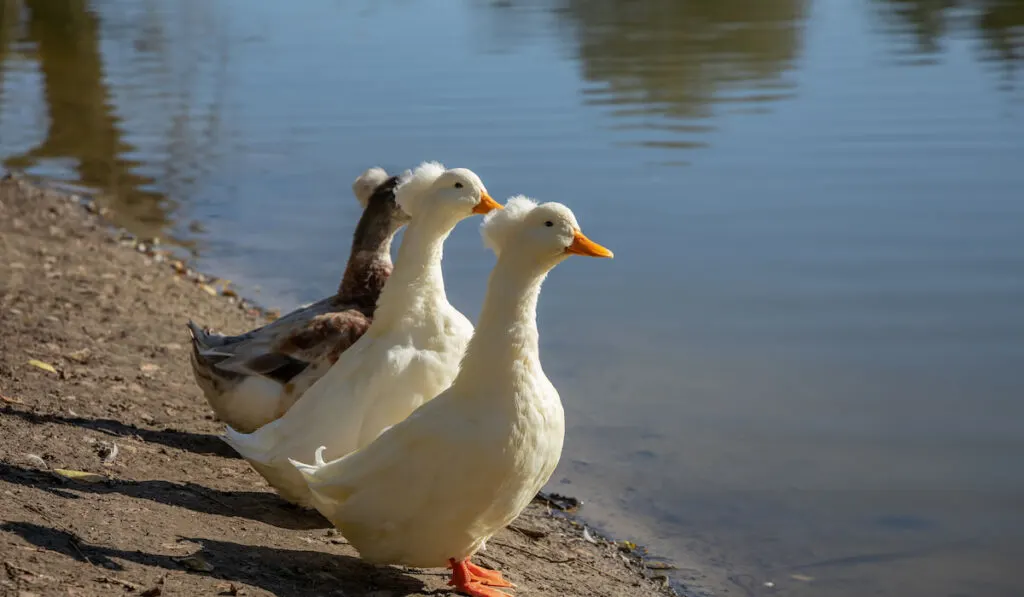
What to Expect When Breeding Crested Ducks
Breeding crested ducks can be daunting: mating two of them can lead to a lethal allele combination in their offspring.
Statistics indicate that 25% of crested duck embryos die before they are formed.
Additionally, if you manage to mate two crested ducks and you get offspring, it’s highly likely the ducklings will have health issues, such as wry neck.
Some ducklings also won’t have the crest on their head.
Another thing to note is that breeding a non-crested duck with a crested duck doesn’t always result in a crested duckling. Nevertheless, this type of breeding won’t lead to embryos dying in the shell or sick ducklings.
Can Any Duck Be Crested?
Other duck breeds can have crests, but their crests won’t look as prominent as crested ducks’ crests.
What Makes a Duck Crested?
A genetic mutation forms a crest on a duck’s head.
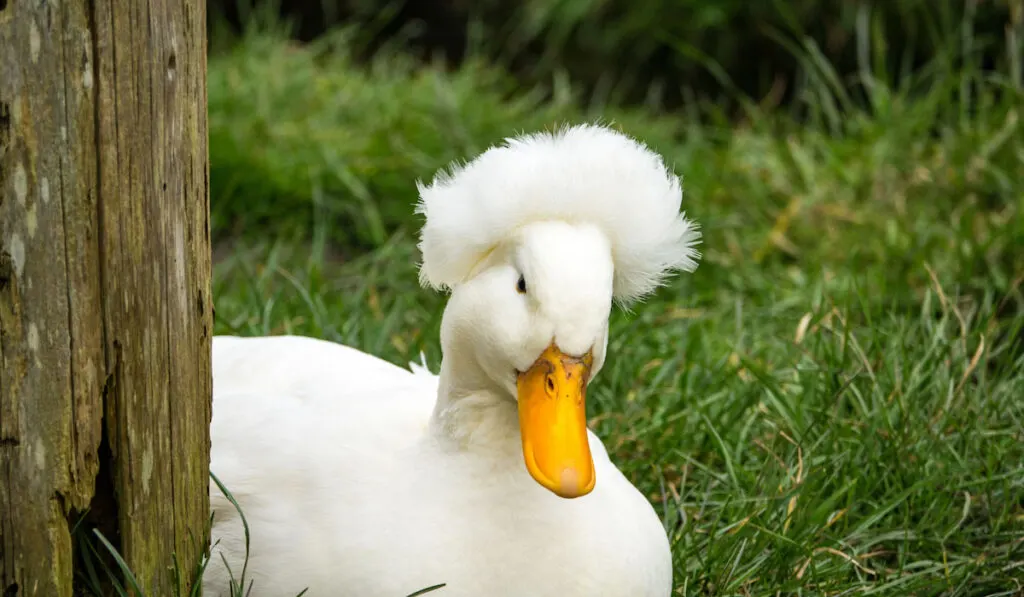
Are Crested Ducks Rare?
Crested ducks are rare due to the genetic mutation that forms the crest. It’s challenging to find a pure crested duck.
Final Thoughts
Crested ducks are a fantastic domestic duck breed for your farm or backyard. These medium-sized ducks are friendly and easy-going, which makes them great pets.
Being a dual-purpose breed also means you can enjoy their meat and eggs.
Having learned about their characteristics and needs, we hope you’re better informed about what to expect when raising these ducks.
Resources
- https://www.waterfowl.org.uk/wildfowl/true-ducks/crested-duck/
- http://datazone.birdlife.org/species/factsheet/crested-duck-lophonetta-specularioides
- https://www.poultryhub.org/all-about-poultry/species/fancy-duck-breeds/crested
- http://domestic-waterfowl.co.uk/crested.html
- https://www.birdbaron.com/black-crested-duck/
- https://www.omlet.co.uk/breeds/ducks/crested_ducks/
- https://spoiltpups.com/crested-duck-characteristics/
- https://www.rbst.org.uk/crested
- https://poultrykeeper.com/duck-breeds/crested-ducks/
- https://backyardpoultry.iamcountryside.com/poultry-101/neural-problems-in-crested-ducks/
- https://pubmed.ncbi.nlm.nih.gov/30529099/
